If you’re a video creator or entrepreneur ready to build your own video on demand website then you’re in the right place👋.
In this guide, we’ll dig into:
- the pros and cons of custom building your VOD site (along with alternative ways to build it),
- finding the right monetization model for your business,
- and how to create your VOD site in 9 steps 👇
Why creators like you benefit from having their own video on demand website (plus a quick definition)
Already clued up on the benefits? Skip ahead to the next section to dig into the “custom build vs VOD platform” dilemma.
A video on demand (VOD) website gives paying customers unlimited access to exclusive video content in exchange for a fee (usually monthly, or annual). Content is available behind a paywall, so customers need to sign up before being able to stream it, like the below example from NextUp comedy:
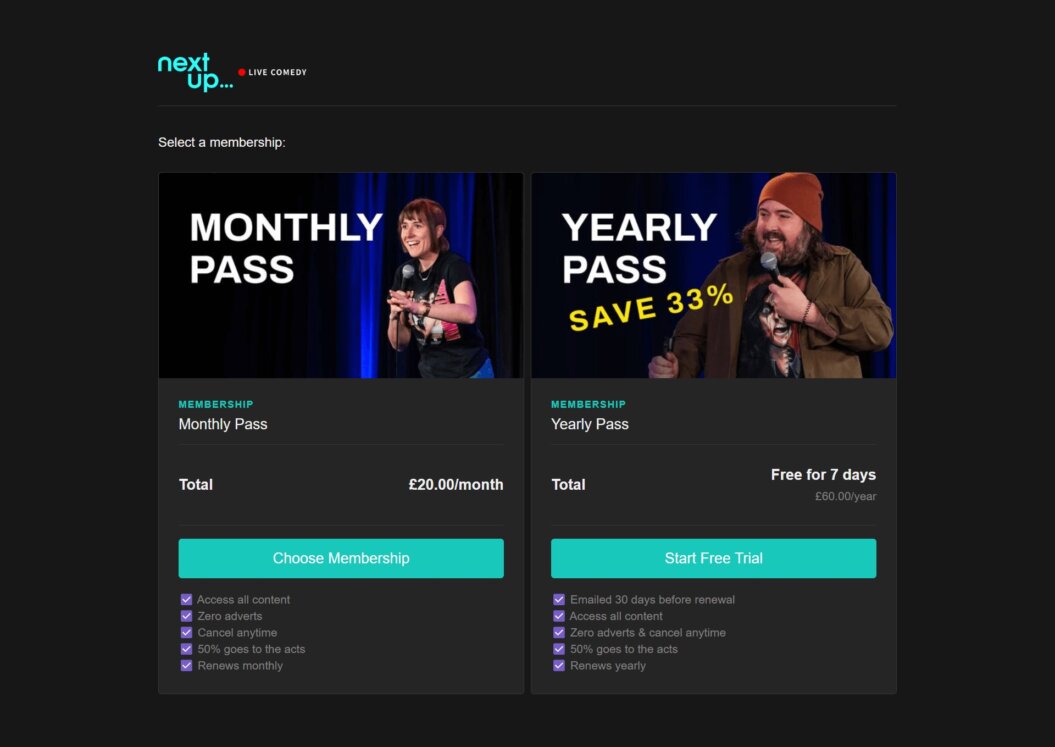
Having your own video streaming website benefits creators like you in three key ways:
1. Earn stable revenue
Offering video on demand from your own website means customers are paying you directly. It cuts out the ‘middle man’ from monetizing on YouTube through Ad Sense or brand deals. Instead, you have a more predictable income from regular subscribers with lots of growth potential. Like MeansTV who grew their monthly revenue to $40k per month after launching their own video streaming site.
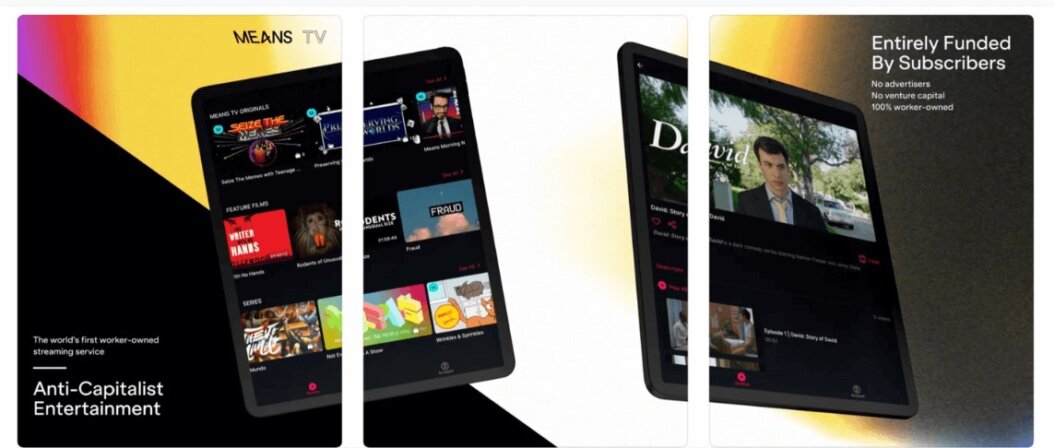
2. Experience content freedom
Having your own video streaming website means freedom over your content. You don’t need to meet the rules and expectations of larger publishers, brands sponsoring you or the (ever changing) monetization guidelines and criteria from platforms like YouTube.
Instead, you have ownership of your content which you’re publishing directly to your audience. Choosing a dedicated VOD platform to make it happen means you don’t need advanced technical knowledge to run your site either, leaving you the time and space to focus on creating content.
3. Expand your reach
A VOD website gives you room to scale your offering. Keep adding value to your subscribers through regular new content and exclusive material they can’t get elsewhere, with unlimited potential for the number of subscribers you can have. The key to making this work is laying the foundations before you start building your site to ensure it can facilitate a high number of users streaming at once, and knowing how much the costs are going to be as your site grows.
Right now, your main concern is probably whether you should use a dedicated platform or custom build your video on demand website from scratch, so let’s dive right in.
Custom Build vs. VOD Platform Dilemma
Building your own site
First, let’s talk about custom building your own site. The obvious appeal here is that you have more control over the process and you can choose how you want everything to look and what the overall user experience is like. While this is exciting on a creative level, you’ll need to work with a web developer to make this happen.
Building a basic website on your own with something like WordPress is doable, but if you’re creating a site primarily for streaming video content, there’s a lot of technical functionality that you need to consider to ensure a seamless experience for your users as your site grows, all of which have additional costs involved. This includes:
- A Content Delivery Network (CDN)
- Video hosting capacity and charges
- Site updates and maintenance
- Security
- Adding additional features
The upfront cost of working with a developer to build your site from scratch can be high. A freelance web developer can charge up to $100-$200 an hour depending on their experience, and a website project could cost anywhere from $1000-$10,000, depending on the complexity.
If this is the route for you, then take the time to find the right person, or team, to work with. While you’ll likely find lower rates on freelance sites like Upwork, it’s best to go with an established developer who has the skill and experience that you can trust to build this important part of your business.
Using a VOD platform
Using an all-in-one VOD platform to create your site means you don’t have to navigate hiring a developer and face hefty upfront costs. Instead, you’ll pay a fixed monthly fee in exchange for a high quality site where all the technical concerns are taken care of.
You’ll be able to build your site using the web builder – no coding or technical knowledge needed. You’ll have ongoing access to a support team which is a huge plus when it comes to ongoing maintenance and you’ll have support from a customer success team to ensure your ongoing success. Think of it like a partner, someone who has your back and takes care of the technical stuff, while you can get down to creating.
The downside to this option is that you won’t have the same freedom to build your site from scratch and you’ll need to be aware of what transaction fees the platform charges, and what costs are involved in upgrading as your site and business grows.
For the rest of the article, we’re going to focus on how to create your video on demand site using a VOD platform. Let’s jump right in with what to look for in an ideal platform…
How to create a video on demand website with a dedicated platform
Just so you know, I’m going to be taking you through the step by step process of how to launch a VOD site with Uscreen, but these same steps apply to whichever platform you end up using. This process is built from what we’ve observed our most successful customers doing to build their streaming sites.
Be sure to grab your free VOD website launch checklist to help make your planning and execution even easier!
The only VOD website launch checklist you need
Worried you’re forgetting something? Don’t sweat it. We’ve helped thousands of VOD websites launch successfully, so we know exactly what you need to do it too.
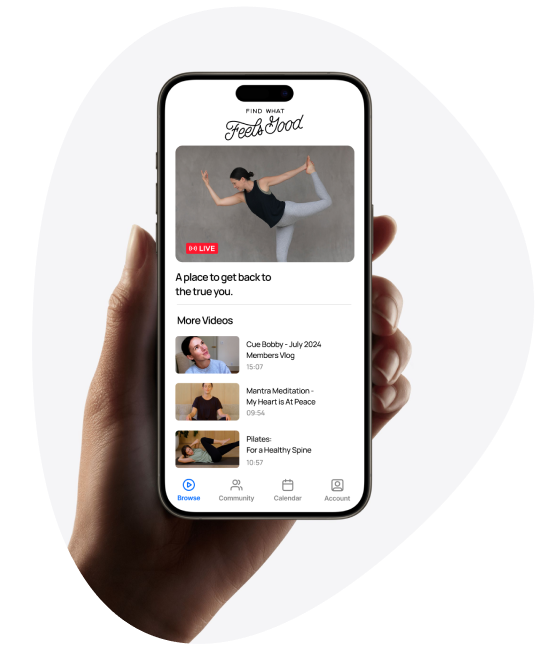
First things first, let’s talk through the specifics of what you need from a VOD platform to support video-first content 👇
1. Choose the right video on demand platform for you
First let’s focus on the features you should prioritize for a video-based streaming website to set yourself up for success. Here are the 5 must-have features you should look out for:
1. Stable, on-demand video hosting
Look out for platforms that offer the following specs:
- 99% (or higher) uptime – this ensures minimal downtime to your streaming service.
- A Content Delivery Network (CDN) – this helps to deliver video streams quickly to users around the world.
- Ample storage and bandwidth – video files are large, so you need to make sure that your platform is offering enough storage capacity to build out your video library over time. Ideally you want unlimited bandwidth as your site needs to be robust enough to support a large number of users streaming at the same time.
- Content protection and security with digital rights management, encryption and secure streaming protocols through HTTPS, HLS (HTTP Live Streaming), or DASH (Dynamic Adaptive Streaming over HTTP).
2. An easy to navigate video catalog
Your platform should make it easy to sort your videos into categories, with tags and filters to make them searchable. Make sure your subscribers can see from a quick scroll what your content library has to offer, and search for the specific videos they want.
Take Fittest Core for example:
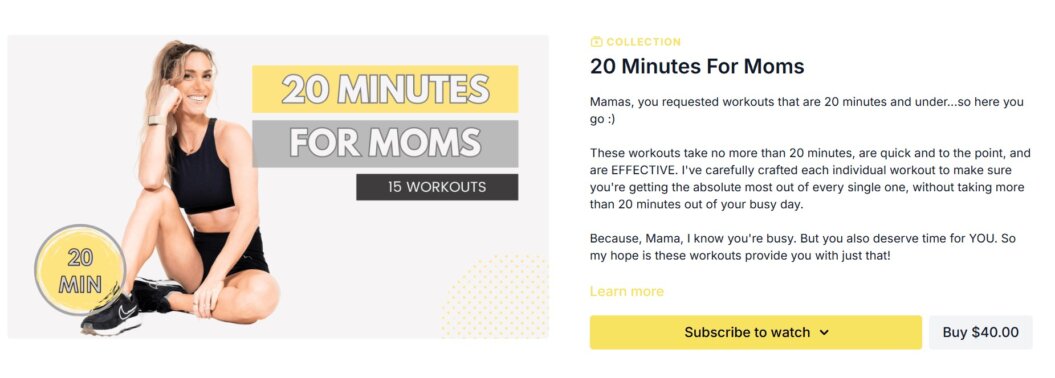
Their previous video platform didn’t have the right features to manage their 600+ video library, which negatively impacted the user experience, making their workouts a “free for all” instead of an easy to follow programme. Check out how they turned things around by migrating to Uscreen.
3. Live streaming capabilities
Your site is primarily going to focus on video on demand content, but live streaming is an effective way to connect with your audience. Our data shows that customers who host regular live streams earn 2.5x more revenue than those who don’t. It’s a chance to build a connection with your audience, increasing the perceived value of your subscription.
Plus, once the live steam is over, it’s another valuable addition to your on demand library without the hours of editing that recorded footage would take to shape into the finished product.
Home Rave’s on demand website is a great example of this, where they live stream sets and users can also catch up on demand when it suits them:
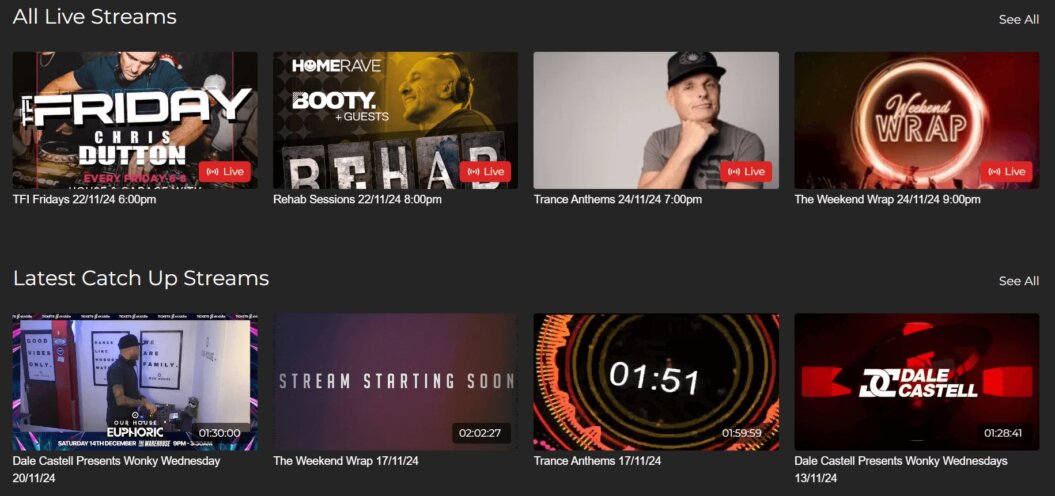
4. Flexible monetization options
You want to make your on demand content as accessible as possible for your audience, while setting yourself up for having stable, recurring revenue coming in. Look for the ability to set multiple different subscription tiers (monthly, yearly and quarterly), sell one-off videos or video bundles or rent content for a short period of time.
5. Mobile and TV apps
The ability to offer branded apps for mobile and TV are important for streaming services to offer the best possible user experience. Nobody wants to be tied to their browser to stream the content they’re paying for, we’re all used to the ease of being able to watch on whichever screen or device is most convenient at the time, so why not offer that to your audience too?
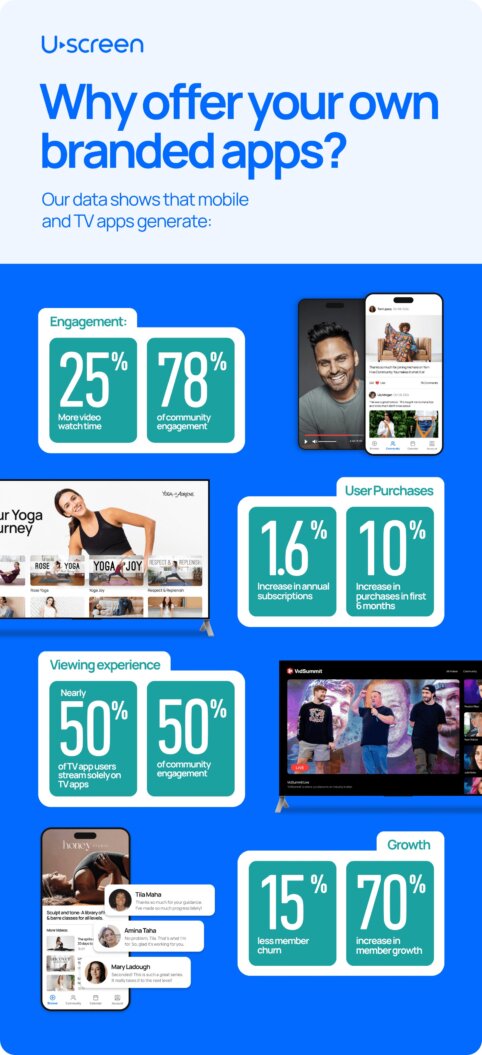
Want a deeper dive into the top platforms for building your VOD website? We have that covered here
Video On Demand Platforms: Reviewed
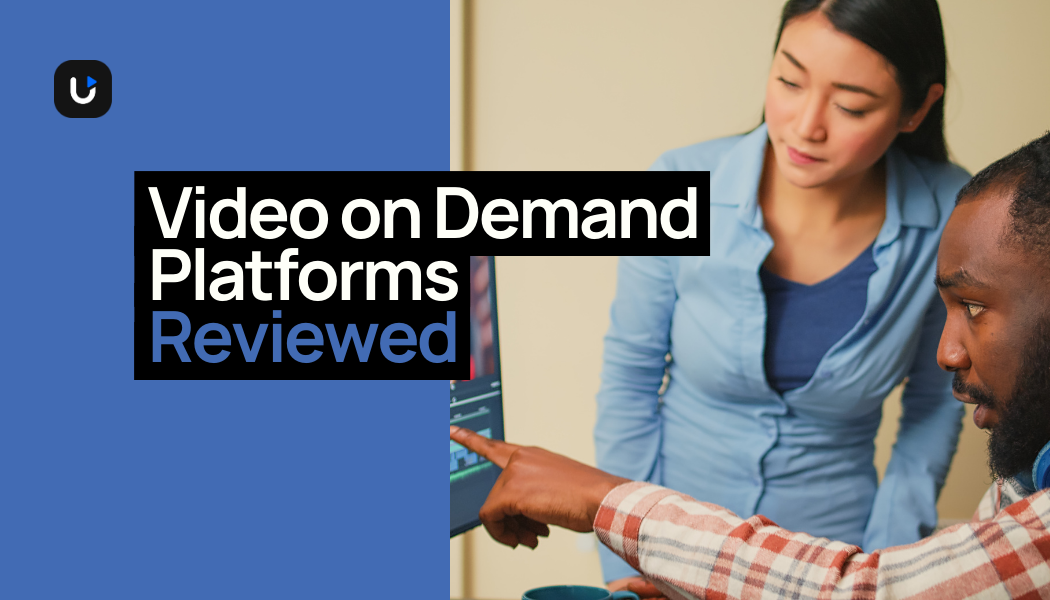
2. Choose a monetization model
Next, you’ll need to decide how to monetize your VOD service from these three main monetization models:
Subscription video on demand (SVOD): Customers pay a recurring monthly, quarterly or yearly fee for unlimited access to your content. Think Netflix, Disney Plus and all those streaming platforms we know and love.
Here at Uscreen, we recommend having two choices: monthly and annual. Too many options makes it overwhelming for users, and this is an opportunity to showcase the value of paying for an annual subscription vs paying monthly.
Jump Rope Dudes for example, highlight their yearly membership as ‘most popular’, emphasizing the opportunity to save money:
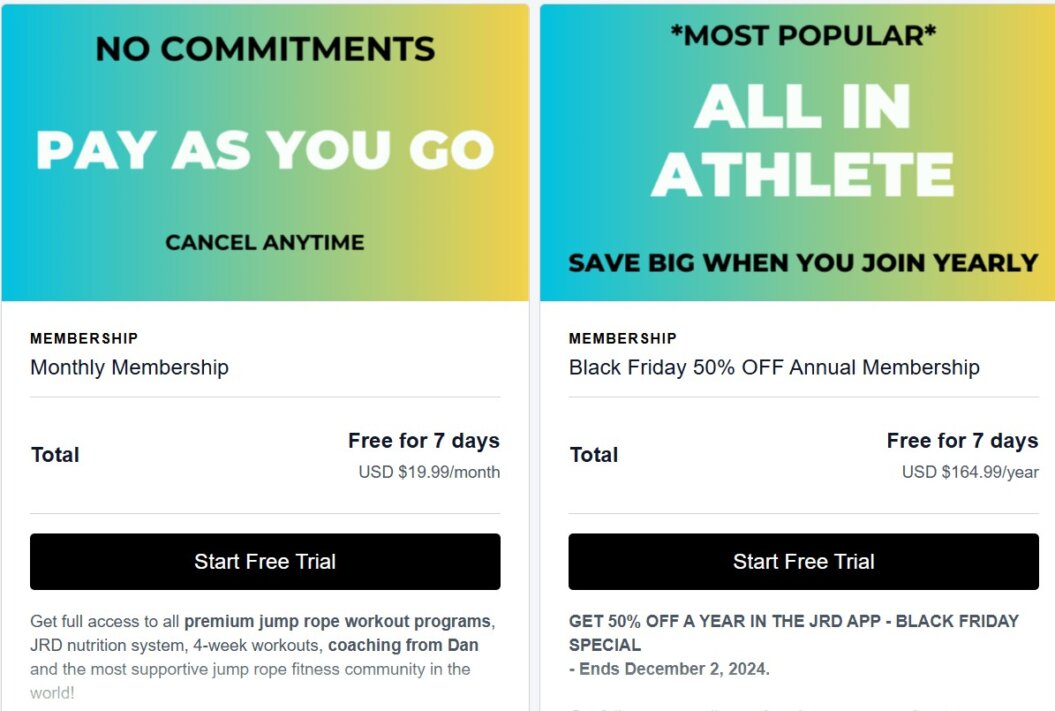
The Black Friday promotion adds an extra incentive for users. The chance to get 50% off draws the eye and makes it immediately feel like you’re getting more value than choosing to pay monthly at full price.
Transactional video on demand (TVOD): This is like pay-per-view where customers buy or rent a particular video or collection for one-off viewing or permanent access. Think, buying or renting movies from Amazon Prime, Google Play or Apple.
Pageants Live have this option available on their streaming site where users can select the pageants from the state they’re interested in, plus some bonus material, as a one off purchase:
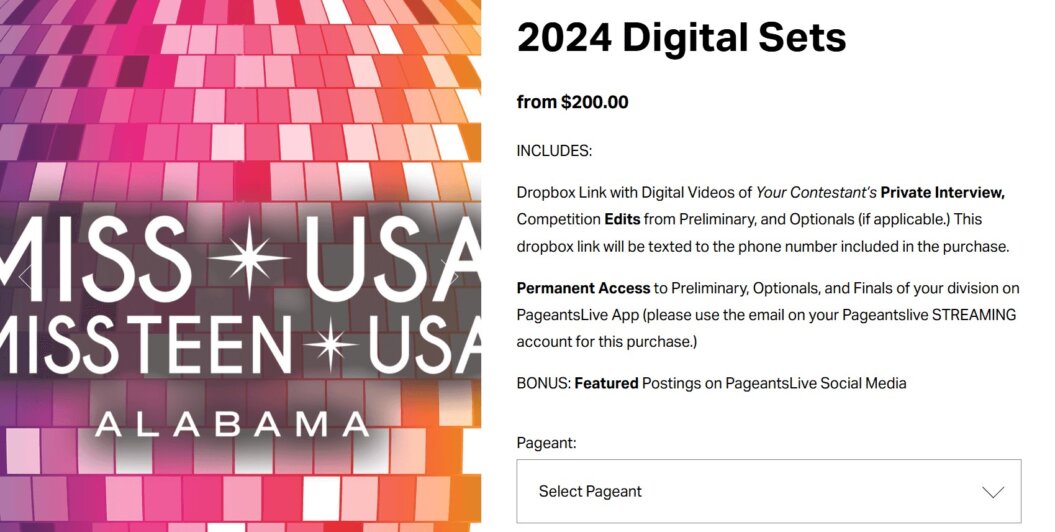
This caters to users who want to watch a specific set of videos, and don’t want to access the whole video catalog. These ‘digital sets’ are still carefully curated to provide additional value to these users, giving them something they wouldn’t get if they took out a one month’s subscription to watch what they wanted and then cancel.
Advertising video on demand (AVOD): Users have free access to videos in exchange for having to watch ads before and during the content (think, YouTube). This is the most common starting point for creators starting to monetize, and it’s likely the stage you’re at now and want to move away from.
You don’t have to stick to just one monetization model either. You could offer a mixture of options based on what suits your business and your audience, which is known as a ‘hybrid’ monetization method (like how Netflix offers a lower cost subscription which comes with adverts).
For example, Fittest Core is a membership site which offers specialized workouts and fitness programmes for new and expecting mothers. Customers pay monthly to access the entire content library through the subscription based model, or they can make a one-off purchase to access just one dedicated programme, or a video bundle:
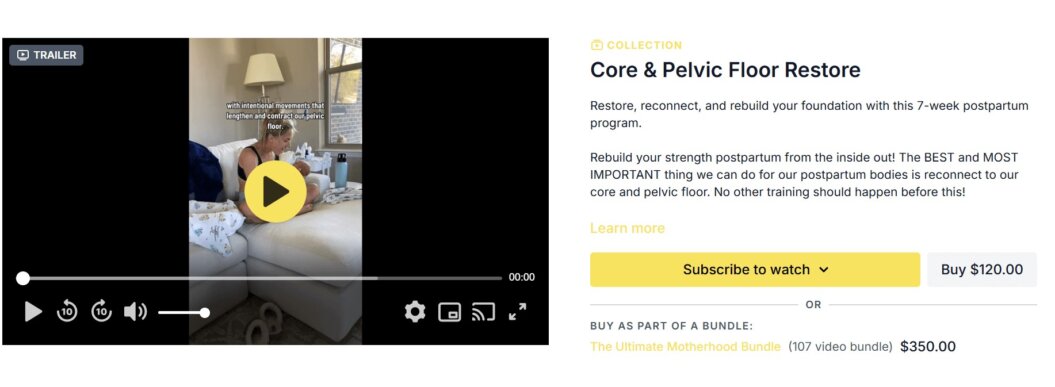
This is ideal for their target audience, as these videos are designed for a specific period in their lives so a recurring subscription might not work for everyone in the long term.
Wild Goose TV has a different monetization model altogether. As a faith based organization, their aim with this video streaming site is to make their content freely available to as many people in their community as possible. They monetize by donation, either on a monthly or one off basis:
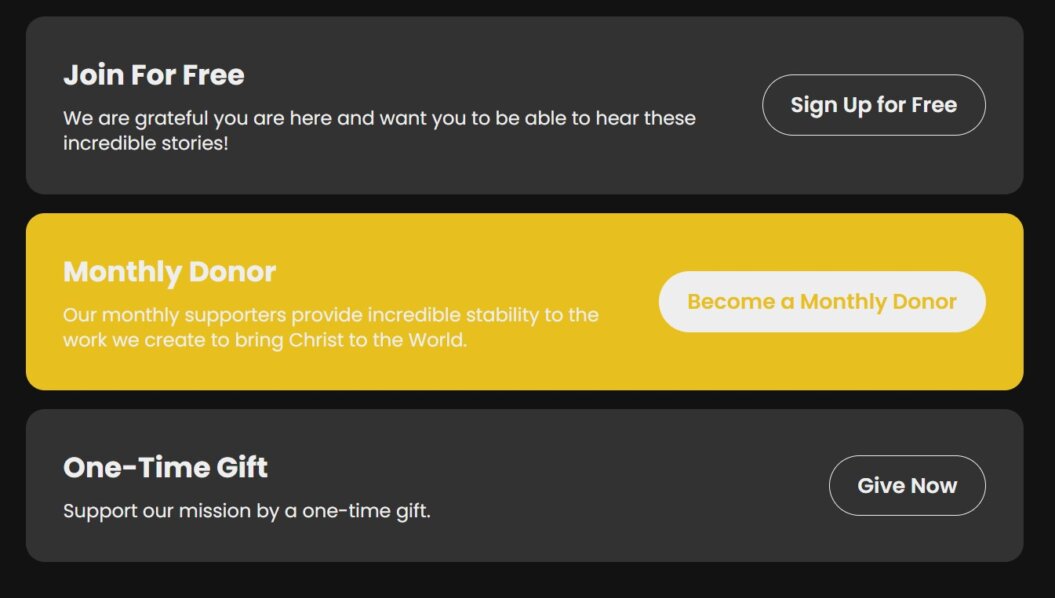
The key takeaway here is to focus on your audience first— do they want ongoing access to content they can binge watch at their leisure? Or do they have specific interests or goals that they want addressed in a one-off package or series? Or, are they a combination of both?
Why the subscription model is a winner…
The subscription model is a popular and familiar choice for accessing on demand video content. It gives users flexibility and freedom to dip in and out of your content library to watch videos as often as they’d like.
In the US alone, 83% of households are subscribed to at least one streaming platform.
The TVOD model can be useful if you offer an online course, or want to make a film or series available for one-off purchases. This has the benefit of capturing users who are only interested in that specific video content. The downside to this model though is that it doesn’t give you recurring revenue in the way that a subscription does, and your users aren’t getting the full value from your on demand content.
For AVOD, we all know how annoying it is to be interrupted by adverts when we’re in the middle of enjoying our favorite content. It certainly ruins the zen of a yoga practice when you’re in the middle of a downward dog and it suddenly cuts to an ad for laundry detergent! I know I’d much rather pay for ad free content.
For you as the creator, this model limits your ability to monetize effectively because you need to meet the criteria, and generate enough watch time and engagement to get paid. But, the AVOD model does have its place and time, especially when you’re starting out with monetization. If it’s the right choice for you, then YouTube is the place for it.
The subscription on demand model means you can skip all that and get paid directly from your audience on a recurring basis. There’s no limit to how many people can subscribe, so you have infinite room for growth.
Pro tip: Adding a free trial to your subscription empowers your audience to address their objectives by directly engaging with your content. Our data shows that 52% of users who sign up for a free trial convert into paying monthly members and businesses that offer a free trial earn upwards of 20% more revenue.
3. Upload and organize your videos
Optimize your video files
Before you start uploading your videos, make sure your video files are an appropriate size. If they’re too large, they use up more bandwidth and can impact the playback speed for the user—aside from taking forever to upload.
Here are the compression and encoding guidelines we provide our customers to ensure the best video quality:
- MP4 video format
- 1080p/2K or smaller
- H.264 video codec
- 20 fps – 60 fps
Pro tip: Break up large video files into a collection and avoid uploading files larger than 13GB at a time to avoid transcoding issues, uploading delays and slow load times for your users.
Organizing your video library
The organization of your content directly affects how, when, and even why your customers consume specific content.
I once joined a membership website called Writers HQ. While there’s plenty of great content available on demand, I found the way the website and content was laid out wasn’t intuitive enough and I couldn’t always find what I was looking for. The content was spread out over three different tabs, rather than being accessible from one central library:

As a result, I ended up canceling my subscription (in fact, I’ve canceled then rejoined after another burst of motivation only to end up canceling again for the same reason).
Even though I had a strong interest in the video content and actively wanted to consume it in my own time, the user experience of the platform was enough to drive me away as a customer.
That’s why it’s so important to make your video library easy to navigate, so users can easily browse what you have to offer and find the content they want without too much effort.
Kylie Long, Senior Video Production Specialist at Uscreen, shares the following advice for getting started:
Before you jump into tagging and sorting, study what others in your industry do to organize their content. It will give you a clue to what your audience will be expecting. (If you don’t know anyone in your niche, check out the Uscreen examples page.) I’d also recommend keeping your organization simple in the beginning, and then get feedback from early customers. As an example, I saw a yoga creator add an “under 10 minutes” filter to her site after people asked about it on Instagram.
Once you’ve figured out how you want to organize your video content, we’d recommend starting with at least three or four categories with a minimum of five or six videos in each category.
💡Top tip: Shorter videos might be easier for your subscribers to consume. Breaking down longer footage into several shorter videos helps you to fill out your catalog while making it more digestible for users.
Aside from your main video content, are three essential catalog elements that are worth some extra time and attention (recommended by Kylie):
- Make sure your catalog is searchable by adding keywords to your description and tags (think, what words and phases would subscribers use to search for the topics, genres and types of content you have available?)
- Write clear titles. Inside your VOD website you aren’t competing in an algorithm like you would be on YouTube, so titles can be more straightforward (and easier to search for!)
- Create a welcome video to help your customers get the most out of your site and apps with a virtual tour.
A note on video specs: You’ll have your own unique editing process but be aware of the file size limits of your platform when uploading your videos, and avoid 8k if your platform doesn’t support it.
4. Add the key components
Once you’ve built out your video catalog, it’s time to start customizing your website to make it look eye-catching and distinctive as your brand. Let’s start with your logo and branding assets…
Add your branding
One of the first things you’ll be asked to do in the web editor is to select your brand color and color scheme. This will influence details like your call to action buttons and links. Your color scheme should match your design assets and be consistent and recognizable throughout your site.
Take Urbanflix TV for example. They have a clean, simple color scheme of red and white on black throughout the site which matches their logo:
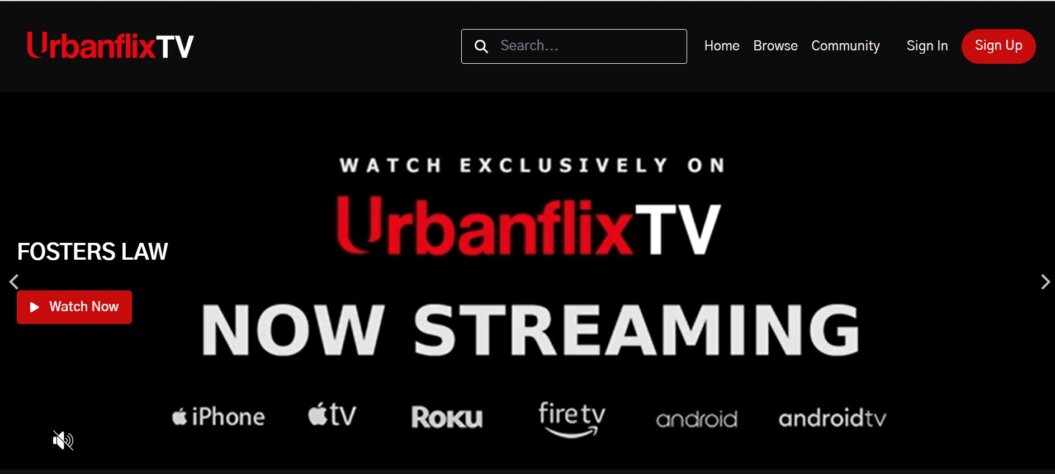
This is effective because everything from the text to the call to action buttons reflects their brand colors. If we scroll further down, the main focus is on their content but the branding is still clear with the label up top and the distinctive red and white numbers to the right:
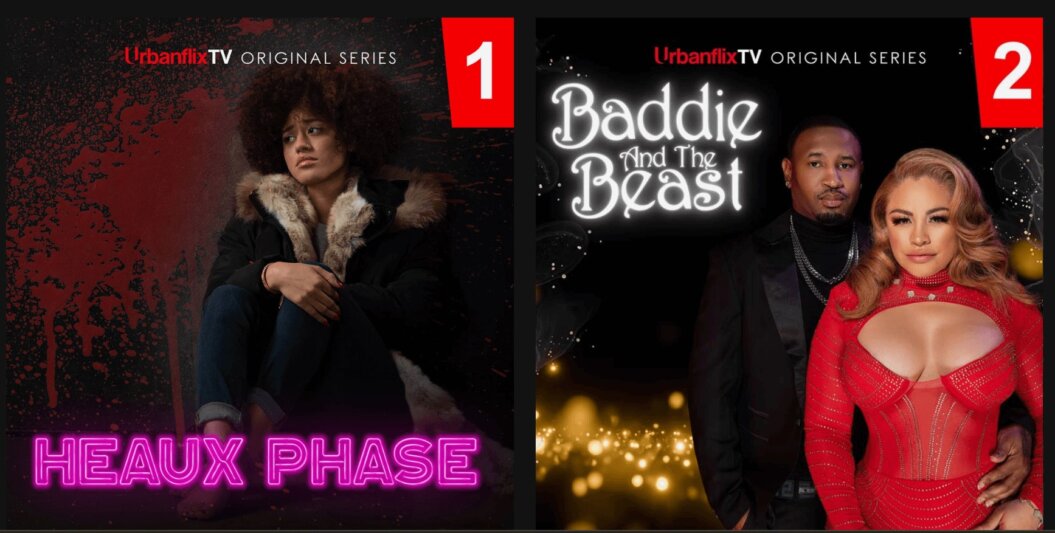
At this stage, you’ll also upload your logo and favicon, which is the little icon that shows in the browser tab and Google search results for your brand and website.

Make sure to have the correct file size and type ready, so all you need to do is upload and save.
Uscreen’s onboarding specialist Rachelle Wood shares her advice on what to have ready before you start building your site:
The most time consuming aspects that lead to delays in launching a VOD website are: waiting for a designer to finish brand assets, figuring out what to put on the homepage, and creating content. The people who launch quickly are businesses who have their brand assets and existing content ready and have done their research and already outlined their pricing.
Add your key pages to your navigation
This is like a map to help users find their way around your site. It’s likely that your website builder will auto-populate this with a few key pages to get you started; here’s how that looks in the Uscreen platform:
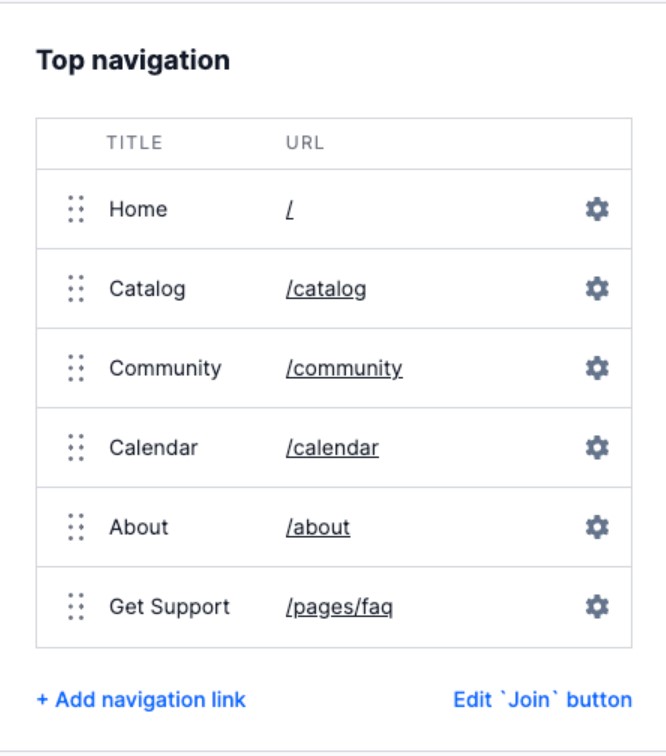
Not all of these options are going to be relevant for you, depending on what you plan to include with your streaming service. If you check out the above example from Urbanflix TV again, you’ll see their navigation consists of just four options: home, browse, community and sign in.

This keeps things simple, making it easy for users to quickly understand what type of video streaming service this is, the content available and how to join and sign in.
Create your homepage
Your homepage is arguably the most important page on your site, so it’s worth spending time getting it right. Let’s start with the layout…
The layout of your homepage is key— it needs to communicate who you are (as a brand) and what your audience can expect from your website, making the journey flow so that getting all this information is effortless. Make accessing your content as easy as possible: place call to action buttons in the appropriate places so that users can click to take the desired action without having to scroll to find them.
The key elements to include are:
Logo and branded header
Use captivating imagery that conveys your unique brand and shows the people coming to your website what your subscription is all about. Inside Yoga do this with a sliding carousel made up of snapshots of the different programmes they offer inside of their subscription service:
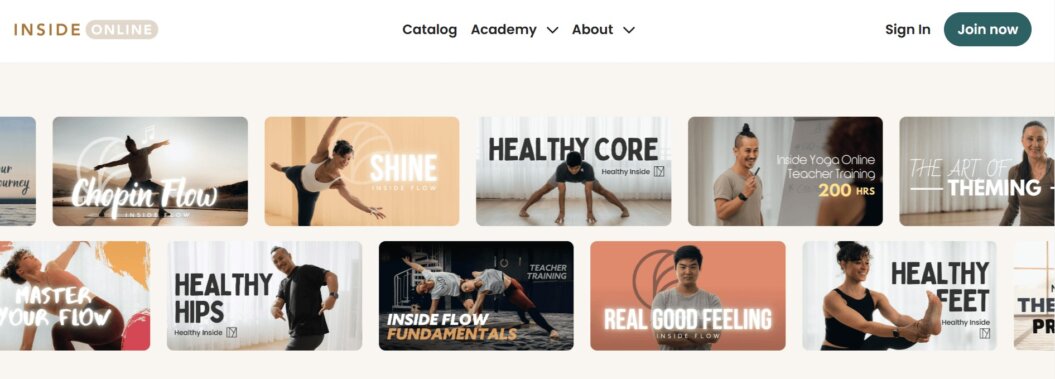
A short ‘elevator pitch’ description
This should answer the ‘what is this and why should I care?’ question at-a-glance. It’s a tall order because it needs to communicate what’s special and unique about your service in comparison to all the other streaming sites out there.
Let’s look at some examples to see this in action:

‘The home for worker-owned entertainment’ is the elevator pitch for Means TV. It puts the emphasis on the worker-owned aspect of their entertainment, clearly positioning them as an alternative choice to the big names.
Pageants Live keep it straightforward and to the point:
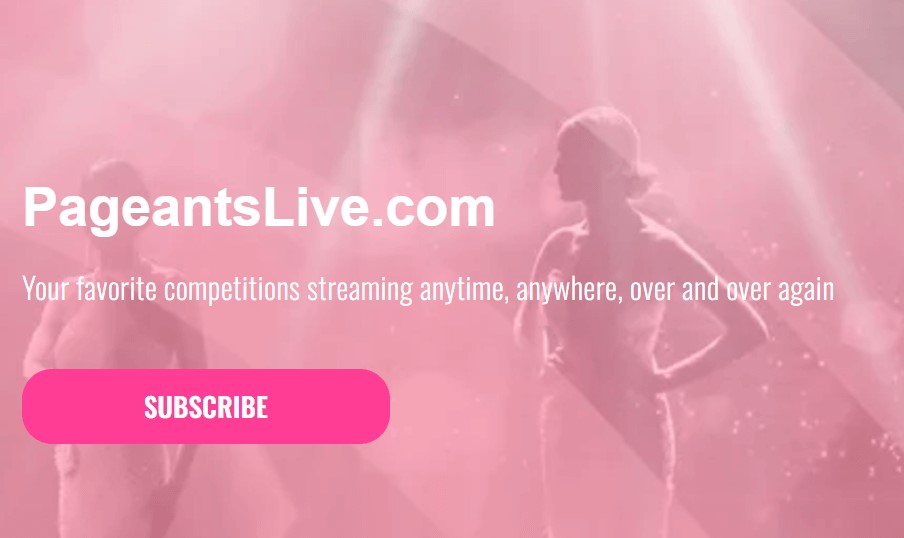
It’s already clear from the brand name what this site is all about, and the elevator pitch emphasizes the easy accessibility of the content through the ‘streaming anytime, anywhere, over and over again’ message.
If creators don’t clearly communicate their value proposition, it can be difficult for end-users to understand the offering, resulting in lost interest.
Clear calls to action
Call to action buttons are your friend. Every part of your website should have a purpose: whether that’s to communicate something to your audience, draw the eye of the user or tap into their wants and needs on a deeper level. But that purpose should always be tied to action; what you want the user to do next.
In the short-attention span world we live in online, we need to make the most of that attention on your website to keep your users engaged. Calls to action are the way to do that—but use them wisely, and when it makes sense to.
If we look at the Pageants Live example above again, the placement of the ‘subscribe’ button is ideal here because users who are interested and keen to start streaming can just click the button, without having to scroll around or find where to go. The color of the button is a bolder pink too, making it stand out against the soft pink background so our eye is immediately drawn to it.
Or this example from Moms into fitness where they have their start free trial CTA underneath this longer description which goes into detail about what their fitness videos are and who they’re for:

This works because at this point, the user can visualize themselves taking part in these workouts and the bold, visual CTA button grabs their attention at the right moment, so they can take action and start right away.
Some of the most common oversights in the website creation process include not making a clear click path/CTA from the value proposition to the checkout, and not having the branding, colors and assets be consistent across the site, which leads to an unprofessional look.
Showcase your video library
Your video content is what your subscribers come for, so make sure every visitor to your website can see the variety of great content you have to offer. Here’s how it looks on Find What Feels Good’s site:
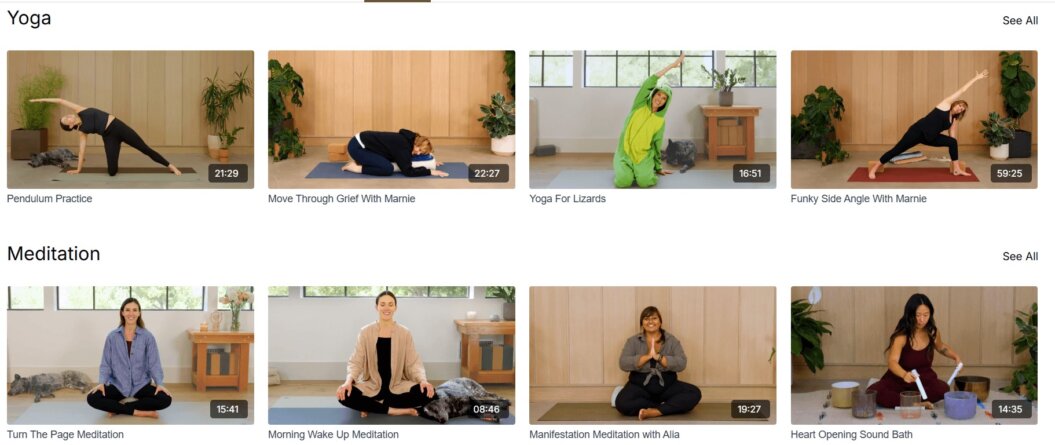
While we can browse the video catalog on the homepage, you need to be a paying member to watch
any of the videos (Personally I’m keen to try out Yoga for Lizards!):
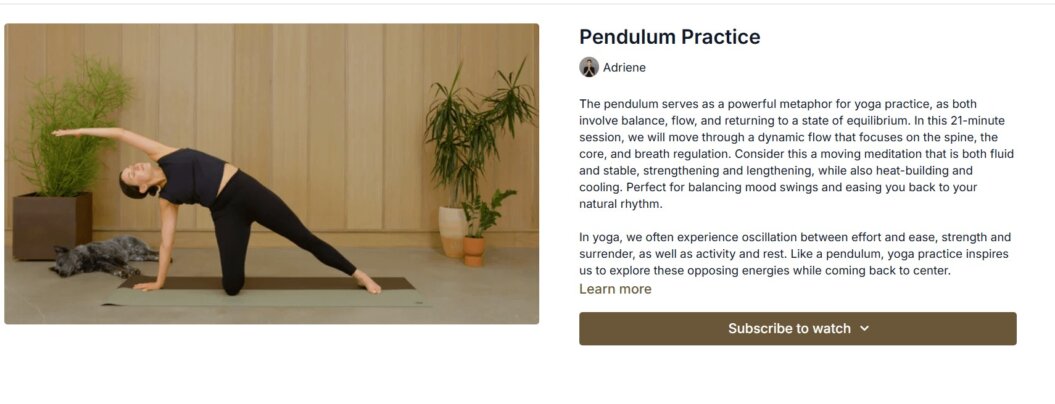
The benefits of joining
Your homepage should clearly communicate why users should sign up, and answer the questions around what they’ll get out of it. Effective copy evokes an emotional response, it digs deep into what your target audience cares about and gets them picturing being part of something bigger or improving their daily life by paying for your content.
The Means TV homepage does this well:

They keep it short and sweet, but these four benefits promise exclusivity, convenience and being part of something bigger, being a supporter of the wider creator community rather than just a consumer. This taps into the desire to be independent and authentic, and stand out from the crowd.
Social proof
Imagine buying something without seeing a single review or testimonial first? You’d be hesitant without seeing real responses from other people’s experience of the product right? Ask your early users to share their experience and review your subscription to start gathering that all-important feedback.
This is a great way to address users’ potential objections when they can read (or watch) an existing customer’s story and how your subscription has benefitted them. For example, on a streaming site like Toveedo which shares content for Jewish kids, testimonials are essential for parents to vet the service before giving their kids access:
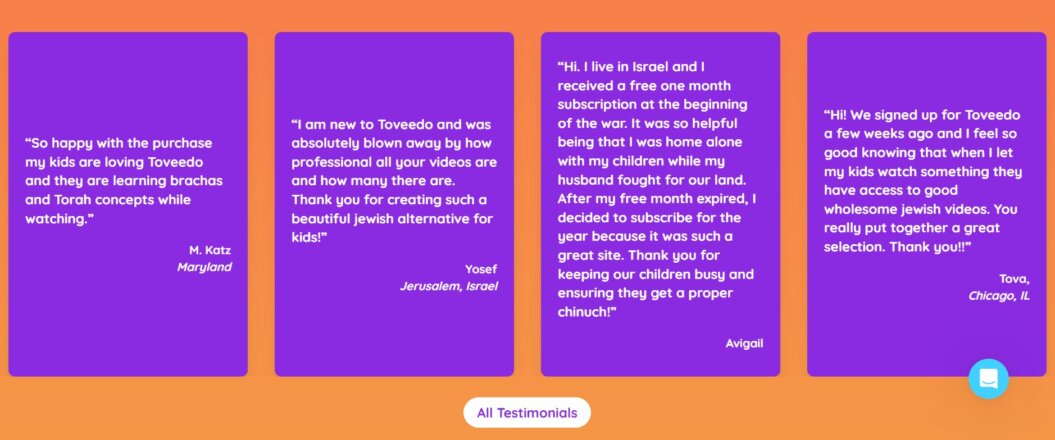
5. Edit your web pages
Pricing page
Your pricing page needs to clearly communicate the subscription options available, how much it costs and what users will get with each option.
The 5 key elements to include are:
- Titles: For each option, keep it simple and consistent so they’re easy to understand at-a-glance.
- Pricing: State clearly how much it’s going to cost and how often this is billed.
- What’s included: List what’s included and highlight what differentiates each pricing tier.
- Thumbnails: Use an eye catching design that’s reflective of your brand to emphasize or add detail. Adding titles like ‘best value’ or ‘most popular’ helps to increase your click through rates.
- Call to action buttons: These should be easy to navigate to and incite users to click and take action.
Here’s an example from Inside Yoga:
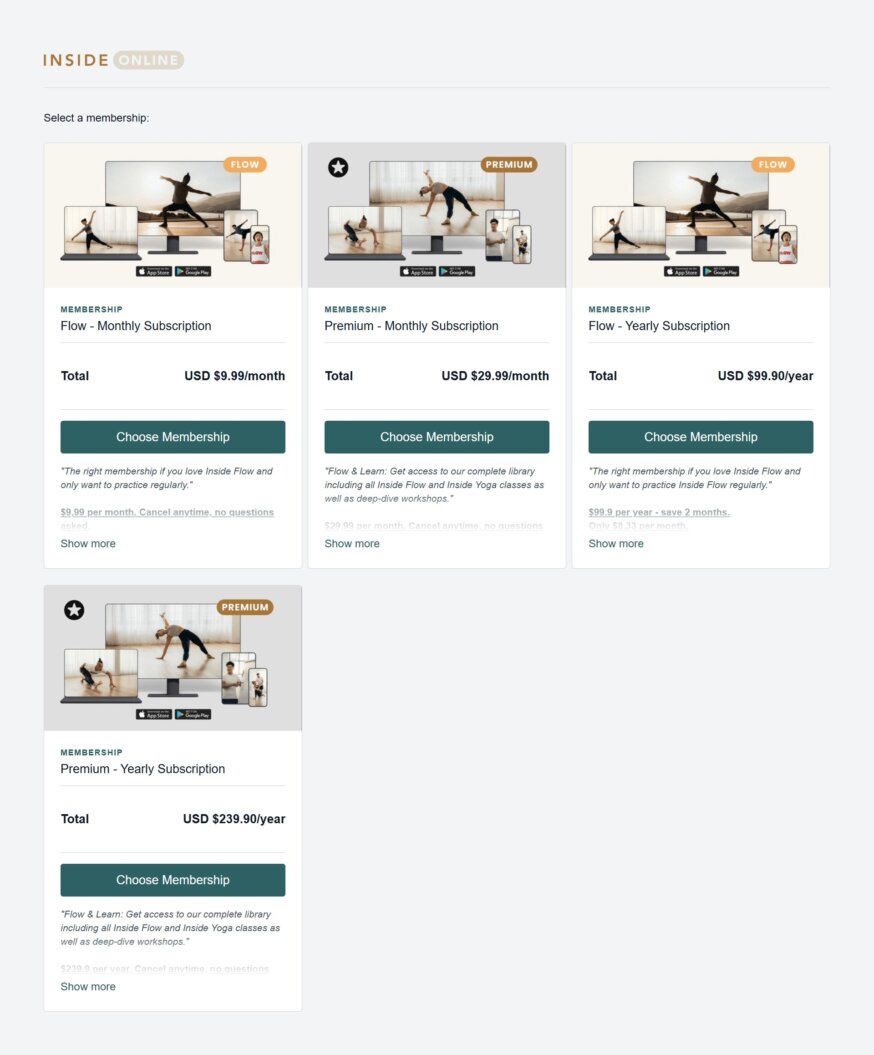
Here we can see that there’s a monthly or yearly subscription, and a premium version of each, and how much each subscription tier costs. Then if we expand the boxes out, they go into more detail about exactly what you get as a paying member:
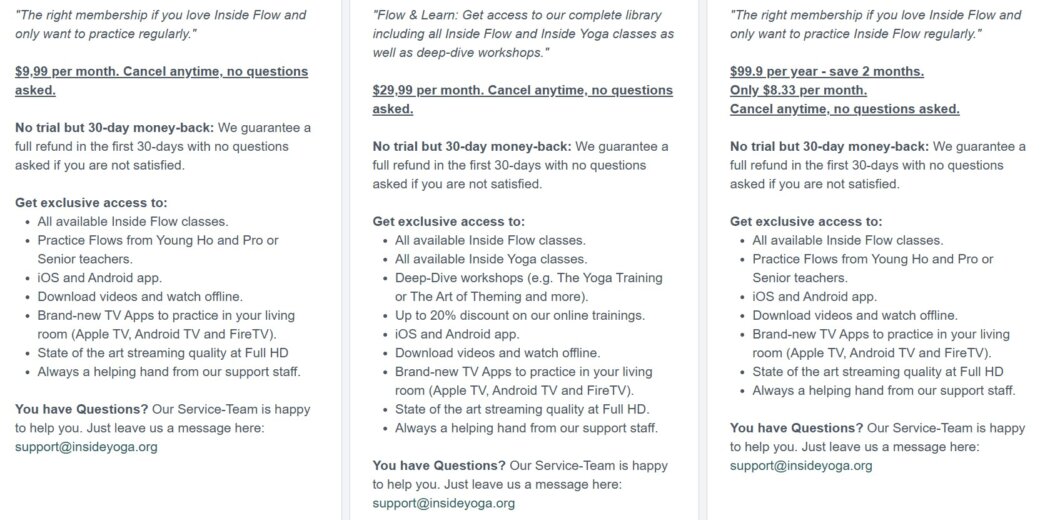
We get a quick summary at the top that speaks to the different types of user needs, a breakdown of the pricing and terms and conditions, and what makes the premium and yearly subscriptions more attractive (access to exclusive content and saving money in the long run).
Offering too many pricing options can confuse potential customers and stop them from making a purchase. Simplifying pricing structures can lead to a smoother sales process.
Terms and conditions
A terms and conditions page is an essential requirement for any website that supports online payments. It’s a requirement from payment processors, but it also protects you from legal liability.
You’ll need to include the following key information:
- Effective date
- A clear definition of what you’re selling and the agreement between you and your members
- Subscription and payment terms and conditions
- User guidelines and expectations for interacting in the community (including what’s not acceptable)
- Cancellation policy
- Privacy policy
- Relevant disclaimers and no-liability clauses
- Contact details
- Amendments to the agreement
- Governing laws
- Refunds and account termination
- Links to key policies
You can use a free tool like Termly to generate a template with all the essentials that you can edit to make it specific for your membership terms.
6. Build your branded apps
Apps make it easy for your customers to access and watch your content wherever they are, however they like. It’s central to the user experience of streaming platforms to be able to watch your favorite show directly from your TV, or on your phone when you’re sitting on the train, and it makes it much more attractive and worthwhile to pay for your subscription when you offer that possibility through OTT apps.
Most VOD platforms have the option to add OTT apps to your offering. While this adds to your monthly cost, it’s significantly more affordable (and much quicker) than building one on your own with a developer where you’re looking at upwards of $25,000 – which is a huge upfront investment.
To get started, simply request your app/apps from your platform provider. The way the process works at Uscreen is that our app developer team builds the app for you, all you need to do is create your app developer account with Apple, Android, Roku and any relevant app stores and we do the rest for you.
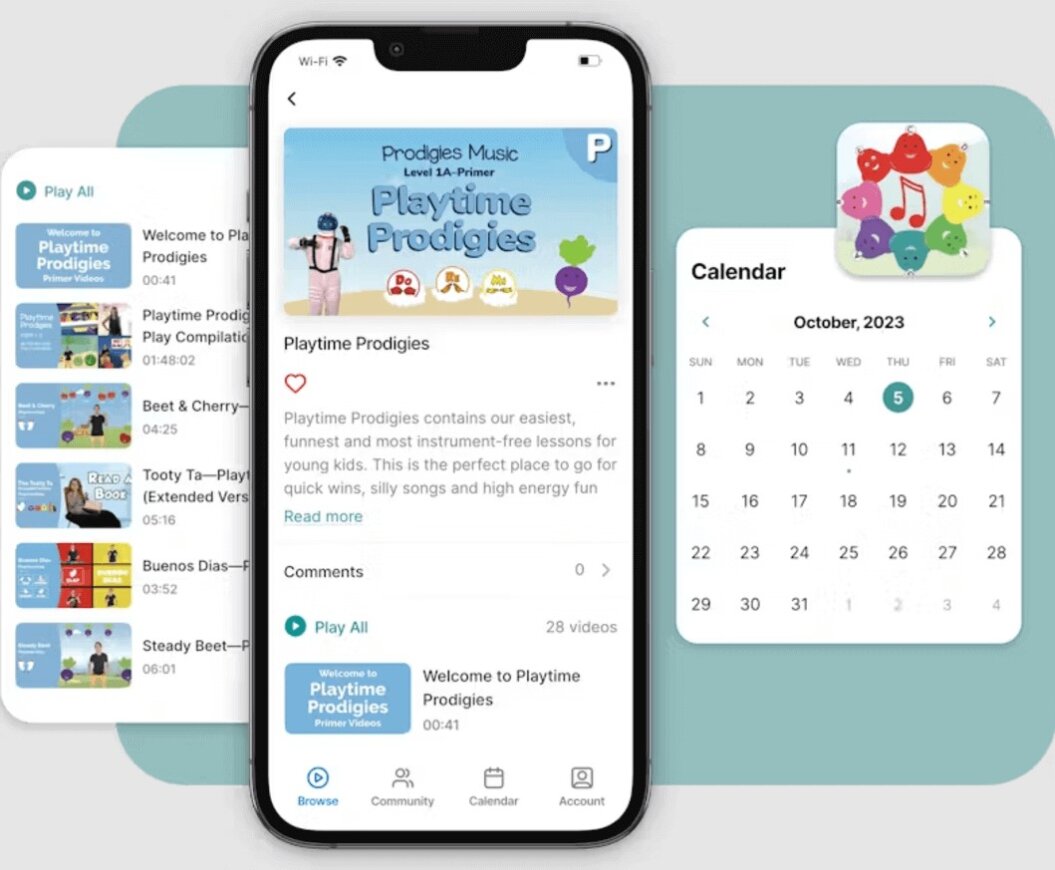
While the actual building of the app is taken care of, there’s plenty you can do to optimize it for the app stores and grab user’s attention as an extension of your brand.
Check out our guide on all things app marketing

7. Add marketing tools
Now that you’ve got your main pages and features set up, your marketing tools are the next thing to consider so you can integrate all your marketing activity into your website platform. Ideally, you’ll have built-in marketing tools available with your platform but if not, you can usually integrate third party tools.
The exact layout of your admin area will vary depending on which platform you’ve built your website on, but you’ll likely have a marketing tab for built-in tools which looks something like this:
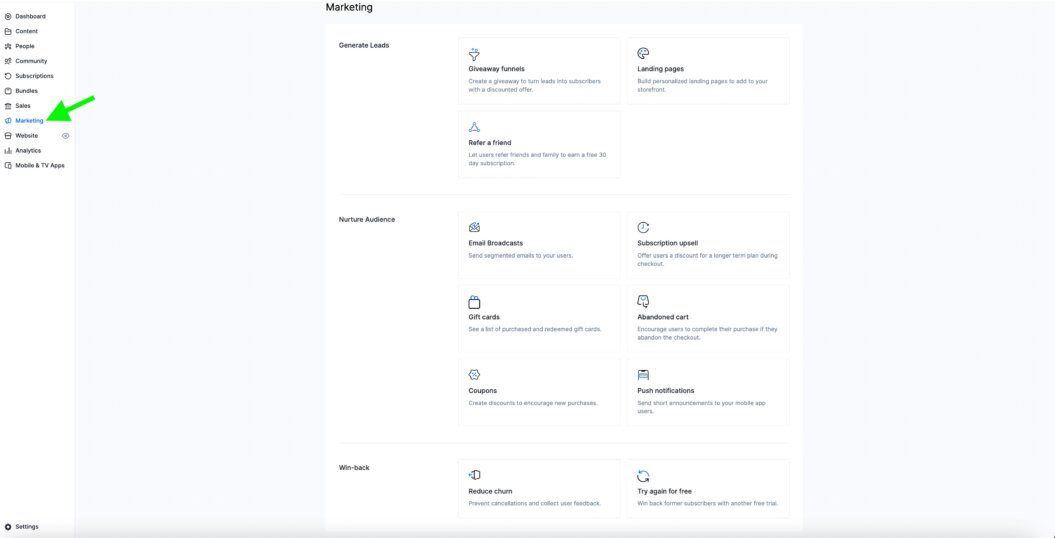
You don’t need to be a marketing whizz to get started with all of this either. Let’s touch on some simple marketing tools you can set up on your video on demand site. They’ll get an email with the content, and then a follow up email with a discount offer for a subscription.
Free trials
Free trials are a compelling way to bring in new subscribers. Our data shows that creators who offer free trials on their VOD website get 20% more revenue in return. It’s a way to offer potential customers a chance to try your content for free before committing, the trick is to offer the right length of time for your business.
We generally recommend a free trial between 3-14 days (depending on your niche and the type of content you offer:
- 3-5 days: Education, high value entertainment. This gives enough time to try it without being able to binge watch everything in your library.
- 7 days: The most common free trial, ideal if you offer additional features like a community.
- 14 days: Ideal for fitness content, as it gives users enough time to build a routine and start seeing results.
To set up your free trial, navigate to the subscription section inside the platform, click ‘edit’ and then set the number of days for your free trial:
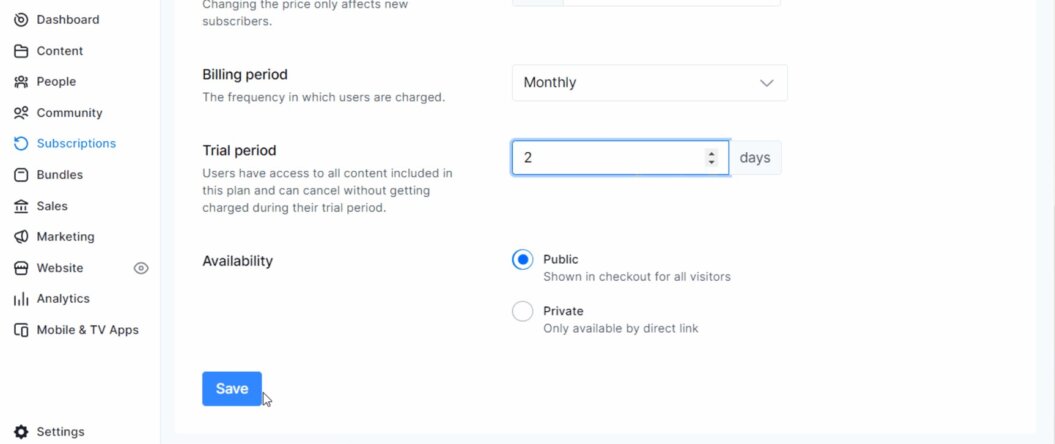
Promote your free trial across your website by adding clear call to action buttons so that visitors can get started right away, increasing the odds of converting into paid subscribers.
Abandoned cart
This is your chance to capture the users who started going through the checkout process but dropped off, or changed their mind. The research on this shows that 7/10 customers fail to complete the checkout process (that pesky short attention span at work again!) So if you begin with that in mind, you can use this to your advantage to gain those customers back and entice them to follow through and become a paying subscriber.
While this is how the process works inside the Uscreen platform, if you’re using a different platform the principles of the tool are still the same so just follow along with the steps available to you:
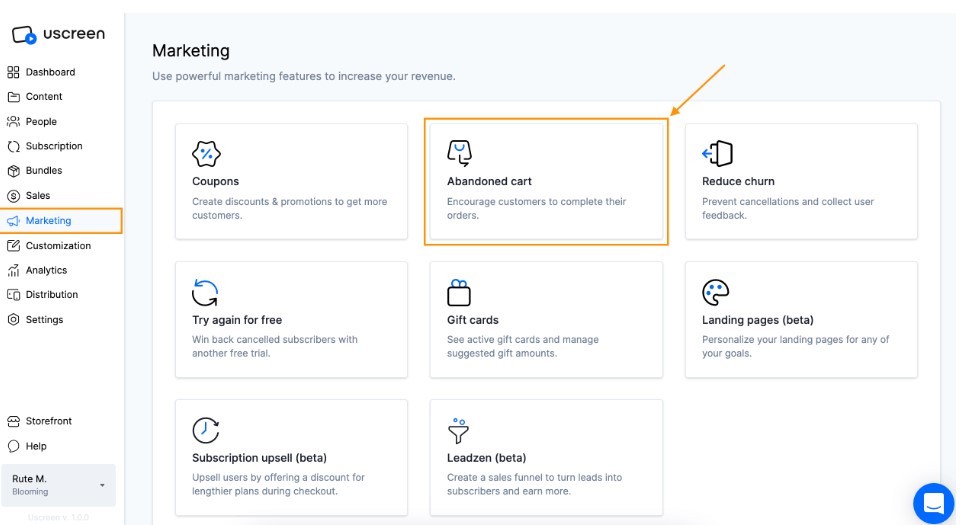
Click into the tool and you’ll see that it sends out a series of three emails beginning with a reminder, and then following up with a discount then a reminder:
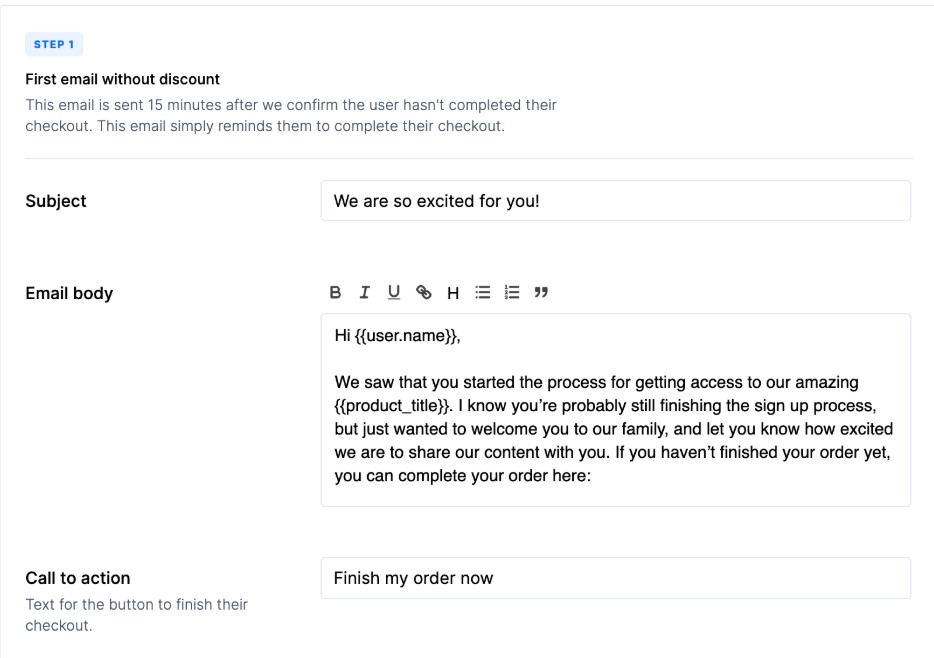
To set this up select ‘new automation’ in the abandoned cart tool, choose the offer you want to provide and which subscription option it should be for. Then you can either keep the email text that’s pre-populated, or you can add your own twist. Hit save and that’s it ready to go, it will keep running in the background.
Giveaway funnels
A giveaway funnel is where you choose a piece of video content to give people free access in exchange for their email address. Once they fill out the form, they get access to the video and receive an exclusive discounted offer to join your subscription. It looks something like this from the user’s point of view:
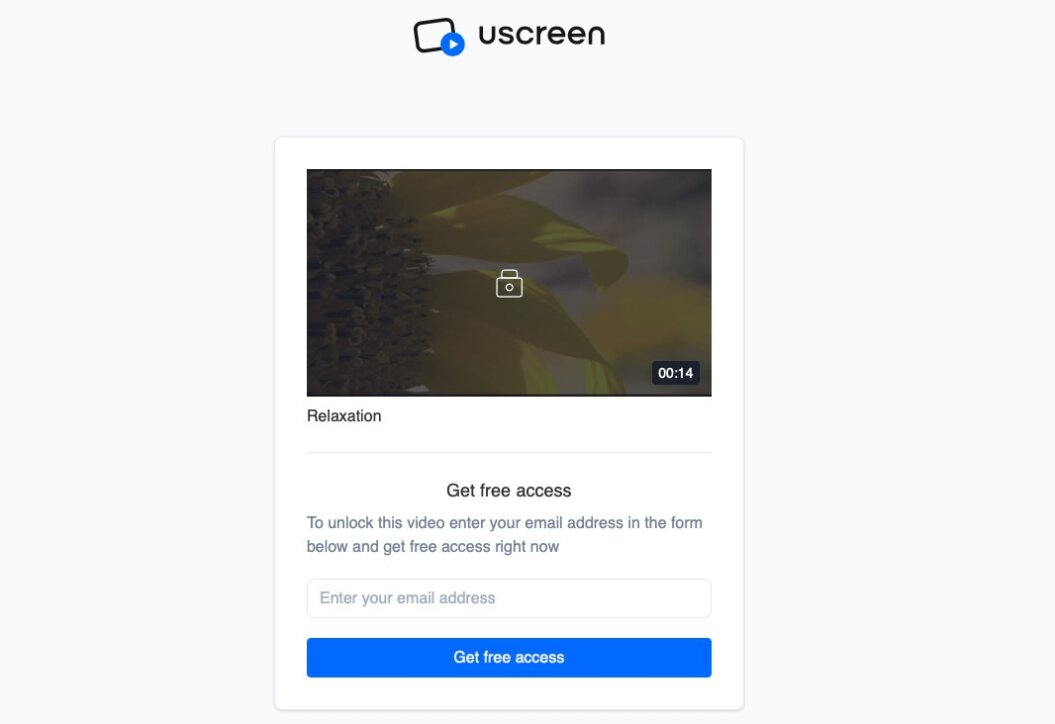
To set this up on Uscreen, you would navigate to ‘giveaway funnels’ in your marketing section. Then click on the ‘new giveaway’ button and follow the prompts to select which content you want to apply the giveaway to, what discount you want to provide and how many billing cycles it should last.
Then, it generates a link which you can use across your site, or to promote on social media:
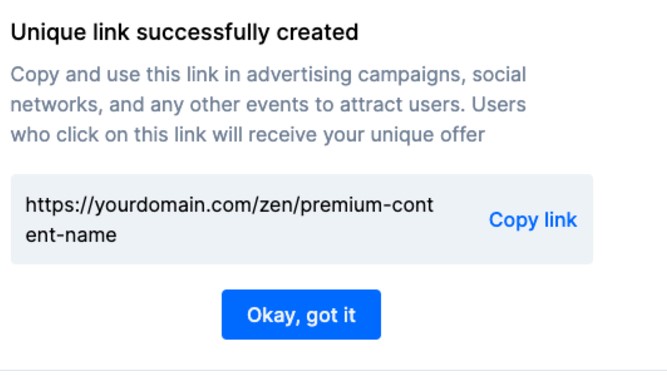
It’ll keep running in the background until you disable it, and you can add the link to a dedicated landing page to build out the promotion further too.
Most platforms have a version of this you can set up, look out for tools labeled ‘sales funnels’, ‘marketing funnels’ or ‘lead magnets.’ For example, Kajabi’s version is called ‘freebies’:
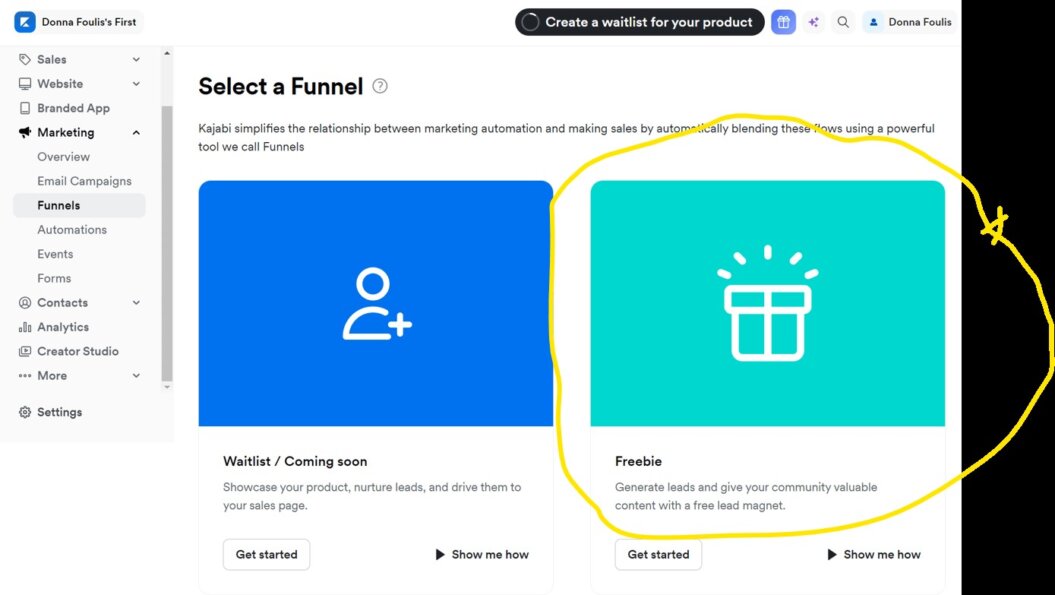
The easiest way to integrate third party tools is through adding a plug in for tools you already use (Like Mailchimp for WordPress for example) or using an integration platform like Zapier to connect the apps you want to use. Or, to find the tools listed above to use your own versions of them.
8. Test and go live
Once you have your website ready to go live, set aside some time to do a final check over and test that everything is working as it should be. The last thing you want is to have users coming back to you saying ‘this link is broken’ or ‘I can’t get this video to play.’
In my experience of working on website launches, the best way to do this is to make a simple spreadsheet (or a ‘snag list’ as it’s often called) and catalog all the pages on your site, including your individual videos and any key landing pages you plan to use.
First, just check through your pages and note down any issues that need attention (typos, broken links, missing images or text, missing CTAs…) then once you’ve done that, it’s time to fix the issues, marking each one as ‘complete’ as you go.
Here’s a free Website Pre-Launch QA template you can use to do this.
This is the less fun part (sorry!) but it’s important for ensuring your website looks polished, professional and delivers the best possible user experience.
We’re all only human and it’s inevitable that mistakes will happen somewhere, and it can be easy to miss them the first time around. If you can, enlist the help of other people to work through this. Choose people who haven’t seen your site yet; a fresh pair of eyes is sometimes all you need to pick up on the things you’ve missed.
9. Learn and improve
Once your video on demand website is officially live and ready to be shared with the world, dedicate time to promote it and to answer questions from your new members and subscribers. In other words, don’t jet off on holiday the day after launching!
This is the time to gather feedback and reviews from early members, which is important both for social proof to entice new users to sign up, but also to tell you what’s working and what might be missing that your users would like to see. This could be content they’d like to see in the future, a community space, or ideas about the user experience of your VOD website.
You can gather this feedback by sending out an email survey and asking your users to rate their experience so far. Give them an opportunity to answer both closed and open questions so that you can collect specific data but also individual insights and ideas.
Next, thank your members for their feedback and communicate how you plan to use it to make improvements. Or, if everything sounds positive already, how you’ll keep making the subscription service even better.
The most important thing is to listen to what your members have to say and use this to keep improving your video on demand experience.
The wrap up: final thoughts on creating your VOD website
So there you have it (finally, I hear you say), now you can get on with building your own video on demand website and enjoy the freedom of being paid directly from your users.
Whichever platform you choose, always make sure it has the right focus for video content, and that it gives you room to scale your streaming service over time.
Speaking of…
Uscreen is a video hosting and monetization platform that provides an out-of-the-box solution to create a premium streaming service on any device, without breaking the bank. With Uscreen you can provide uninterrupted, stable streaming, earn the way you want to with multiple monetization options while optimizing the viewing experience with branded mobile and TV apps.
I was tempted to say ‘be the next Netflix’ but actually I think, ‘be your own unique version’ is much better advice. Either way, a free trial of Uscreen can help you get there and bring your vision to life. All you need to do is click that button and you’re good to go…
Build, launch and manage your membership, all in one place.









